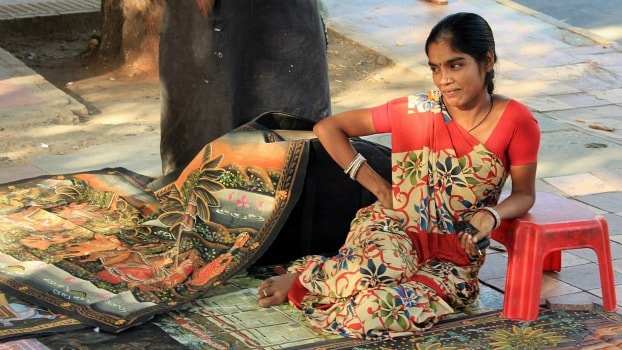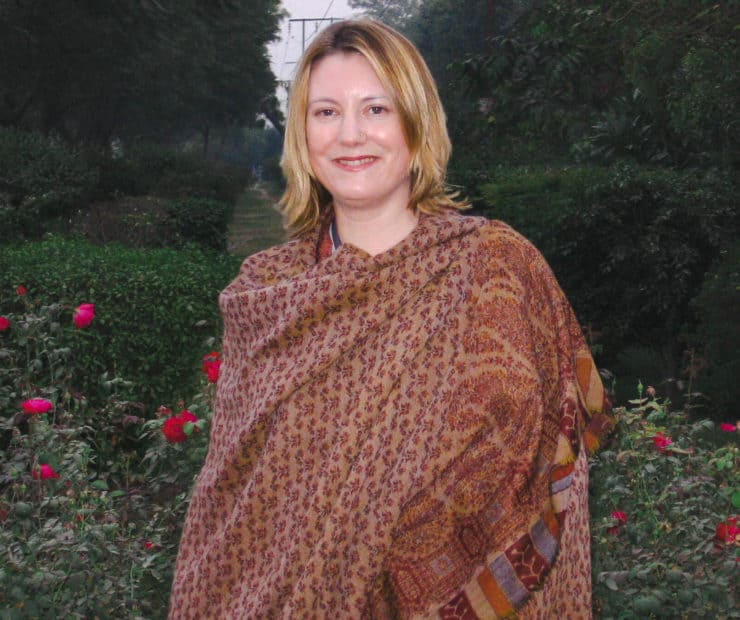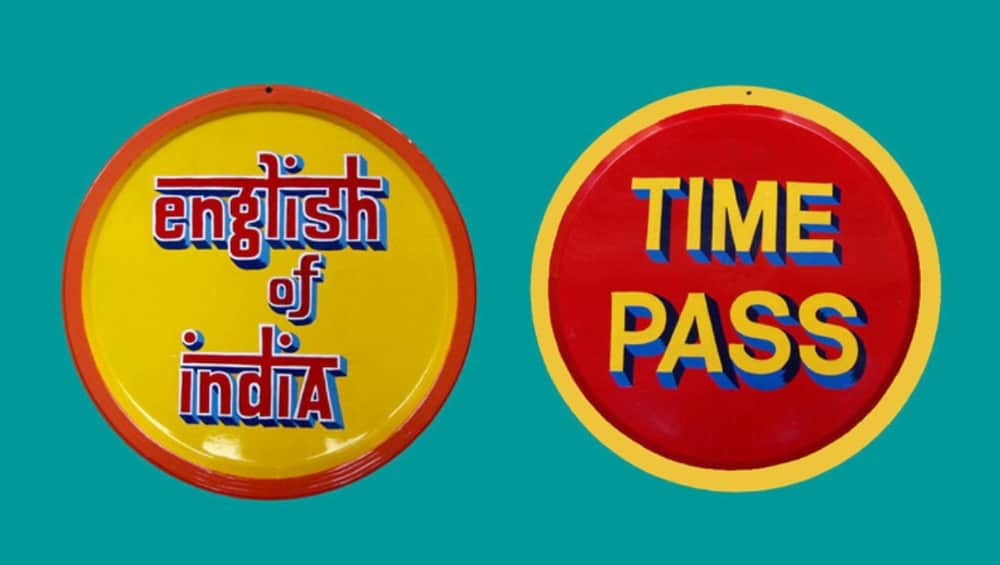
Table of Contents
If you want to learn how to speak English in India, you need to learn about about Indian English and Hinglish
INDIA WAS RULED BY British colonial powers, often referred to as the British Raj, for more than 200 years. When India gained independence in 1947 the British left — and, among other things, they left English behind. As with all previous invaders, India absorbed the cultural influences of the British, including English, and made them uniquely Indian. If you want to learn how to speak English in India, as Indians do, you need to know about Indian English and Hinglish. Below you will find many common Indian English and Hinglish words and phrases.
If your travel plans went for a toss because the travel agent, whose good name is Vijay, was out of station and could not prepone your ticket or revert back to you on time, in spite of calling him thrice” … you know you’re in India.
India is home to the second largest number of English speakers, after the USA. Approximately 10% of Indians speak English, most as a second or third language, but this number is probably a wild guess at best. You can find out how English is dispersed in India here — generally, urban, educated, and affluent people speak it more often.
As you travel in India, you discover that some speak just a few common words and phrases while others are superbly fluent and can put those of us whose mother tongue is English to shame. Like so many things in India, the use of English is creative, unpredictable, and exuberant. It’s just one of the many surprising things that foreign visitors encounter to a country that has an incredibly lively, colourful, inventive culture.
More reading on Breathedreamgo
- Learn basic Hindi for travel in India
- Top 25 best books about India
- Ultimate Guide to Travel in India
India has two official languages — Hindi and English — and 22 scheduled languages including Urdu, Sanskrit, Punjabi, and Bengali. There are many more regional languages such as Pali and Garwhali, plus untold numbers of dialects. The incredible diversity of India is one of the reasons people in India are so adaptable, versatile, and resourceful — and why many people speak two, three, or four languages.
I remember when I first arrived in India in December 2005 and stayed at a friend’s home in South Delhi. The Punjabi family I stayed with spoke English, but as Hindi was their mother tongue, they primarily spoke Hindi to each other, with a smattering of Punjabi. The house help spoke almost no English, so I had to get someone to translate if I needed anything. It was in this home that I encountered Indian English and Hinglish for the first time.
“You said that thrice!” my friend Ajay said to me. I don’t think I had ever heard anyone use the term thrice before!
“Yes, I will do the needful,” his brother said, when I asked for his help to change travellers’ cheques.
Indian English and Hinglish were of course just two of the many things I was experiencing as a newly arrived foreigner in India. As a writer with a degree in journalism who had studied linguistics at university, I was intrigued and charmed right from the start … and sometimes bewildered, too.
How to speak with an Indian accent
Years ago, when I moved to Japan, my friend Mychael gave me some advice based on his experience traveling in India. He said people will understand you better if you speak with a local accent. You can say the same thing in English, but with an Indian accent you will be better understood. It actually works! I have used this tip extensively both in Japan and India — after I got over my initial reluctance. I didn’t want to offend anyone, I didn’t want them to think I was making fun of them.
Here, Anpu shows us how to do an Indian accent. In part 1 of the guide, you’ll learn about the different sounds and how to pronounce various words.
What is Indian English?
When I first arrived in India, I didn’t understand the difference between Indian English and Hinglish. Since then, I have learned that Indian English is the unique way that Indians speak English in India. The use of English in India sometimes doesn’t make any sense to foreigners … until you realize it’s sometimes a direct translation of Hindi, and in Hindi, grammar is constructed differently.
In Hindi — unlike English — sentence structure ends with a verb, and both passive voice and continuous tense are much more common. Plus, there is a tendency to disregard articles such as “the.” So, you end up with sentences that are Hindi in structure but English in vocabulary.
For example, I have often heard people say, “You must be knowing…” This is the continuous tense that’s so common in India. Someone might say “stomach is paining,” which is Hindi in structure but English in vocabulary. “I am having headache… ” is another example of this.
A common question, “What is your good name?” is inspired by the Hindi way of asking for your first name.
Nowadays, after so many years in India, I have adopted many Indian English expressions and I’m barely aware that I use them such as the use of “isn’t it” at the end of a sentence. It’s a direct translation of “hai na?” and is used in a variety of contexts that might not make sense to a foreigner such as: “The mangoes this year are too good, isn’t it?”
There’s also what could be called a creative use of English. The use of the phrase “high funda” to mean sophisticated for example (funda being short for fundamentals).
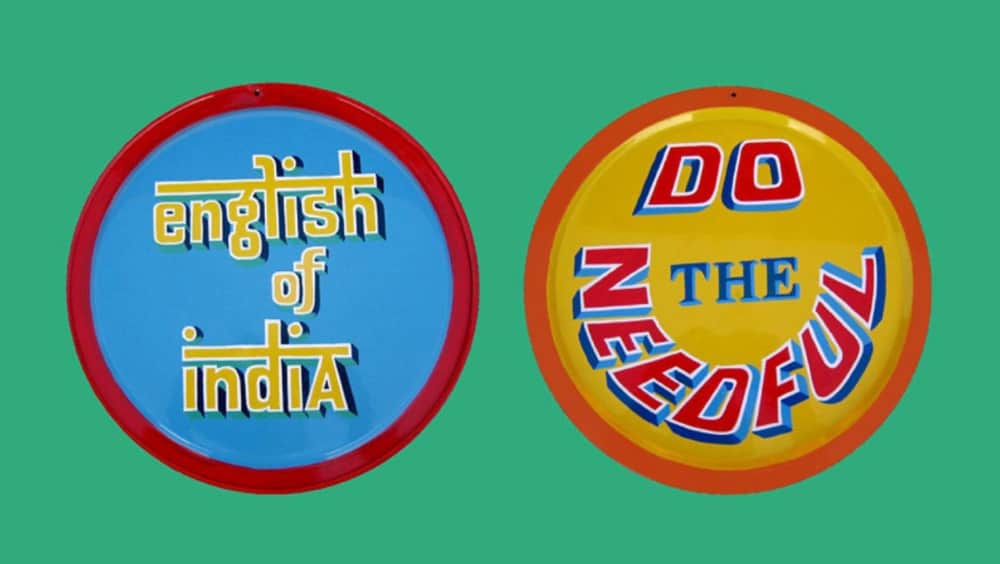
English words and phrases unique to India
Foreigners in India often come across words that are not entirely unfamiliar … yet we may not know the exact meaning or context. I was once invited on stage at the Konark Dance Festival to “facilitate” the dancers. I stood paralyzed in the glaring spotlights trying to figure out what they meant by “facilitate.” They assumed I knew the word, which I did, but not this particular meaning. I was supposed to hand them each a bouquet of flowers, as it turned out.
The word backside is used to mean behind in Indian English — not behind as in buttocks, but behind as in behind the building. So you get for example the International Backside taxi stand, which is behind the India International Centre in Delhi. I read about this in William Dalrymple’s book about Delhi, City of Djinns. When I had a chance to meet Dalrymple, the first thing I did was ask him if International Backside really existed — it did!
The well-known Indian politician Shashi Tharoor is famous for his sophisticated use of the English language, his deep scholarship, and his massive vocabulary. In this video he shares that at least 1,000 words in the Oxford dictionary come from India — or you could say were looted from India, as even the word “loot” comes from Hindi.
Indian English has so many of its own unique idioms. These are just a few.
In India, when students are expelled from school, they are “rusticated,” and when they graduate, they “pass out.”
When people expire, it means they died. And when you ask someone for advice, they might say, “Do one thing … ” which invariably means doing more than one thing.
It’s common in India to use the word “only” at the end of a sentence, as in “55 rupees only.” Or the well-known, “We are like that only.”
Adding “and all” to the end of sentences is quite common. I remember once being in conversation with a young woman in Rajasthan. We were talking about a wealthy man when she said, “He has forts and all.”
An expression I find charming is “just like that.” My friend Ajay uses this all the time to answer questions. In a way, it’s the verbal equivalent of the Indian head wobble in that it can mean so many things … and nothing. The Indian English equivalent of whatever, perhaps.
“What to do?” Is another common expression that means, essentially, what can we do? Or, there is nothing we can do.
“Too much” often means a lot or too good. As in, “That is too much good.”
Some favourite Indian English expressions include:
- batchmate (someone you went to college with)
- timepass (an activity that you do to pass the time … it can also be used as an insult: that film was just a timepass)
- bang opposite (across the street)
- myself Prateek (introducing yourself the Hindi way)
- same same but different
- air dash (take a flight)
- don’t eat my head (don’t nag me)
- dust bin (garbage can)
- charge sheeted (charged with a crime)
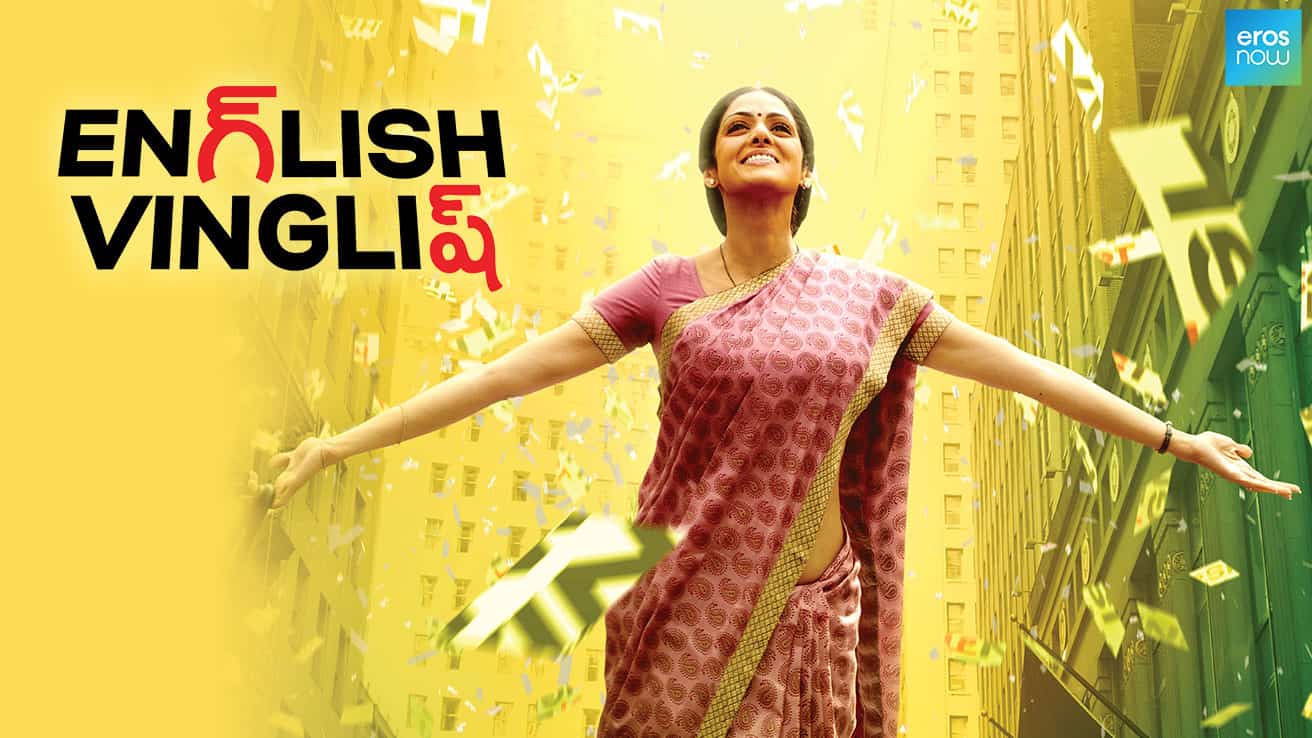
What is Hinglish?
Hinglish is a mix of English and Hindi words in one sentence and it’s in increasingly common use. Sometimes this is because there is no Hindi equivalent, so you might hear words that refer to modern technology thrown into a Hindi sentence. Sometimes it’s because the speaker is not completely fluent in English. But more often than not, it’s probably because of the plasticity of language and the desire for a popular, local, and modern way to communicate.
“Chalo, let’s go.” Basically, both Hindi and English for let’s go, but often used together.
“My sar (head) is paining badly…”
“Can you pass me that kitab (book), bhai (brother)”
“I was in this mela (fair) yesterday where they had these super mast (amazing) stalls.”
“It’s not like I hate geet sangeet (song and music). It’s just that I despise shor sharaba (loud music or cacophony).”
“Haan haan (yes yes), understood.”
“What to do, yaar (friend)?”
“It’s hot today, na (no)?”
Bollywood and Hinglish
Bollywood has certainly fuelled the explosion of Hinglish with titles such as Jab We Met (When We Met), Ek Tha Tiger (There Was a Tiger) and Love, Breakups, Zindagi (Love, Breakups, Life) and characters who speak Hinglish on the big screen. For about the last 10 years, the use of Hinglish in Bollywood films has been used to appeal to a younger, more hip audience.
In the 2012 film English Vinglish, the main character Shashi (played by legendary star Sridevi) feels belittled by her family because she is not fluent in English. While in New York City, Shashi enrolls in a crash course to master the language. It’s a feel-good film because along with her newfound English language skills, she also grows in confidence and rediscovers her self-worth.
The title of the film English Vinglish is a play on an Indian idiom, the use of sing-song, double words. You often hear dheere dheere (slowly, slowly) and garam garam (hot, hot) for example. But nonsensical combinations, much like Cockney slang, are also common — such as English Vinglish.
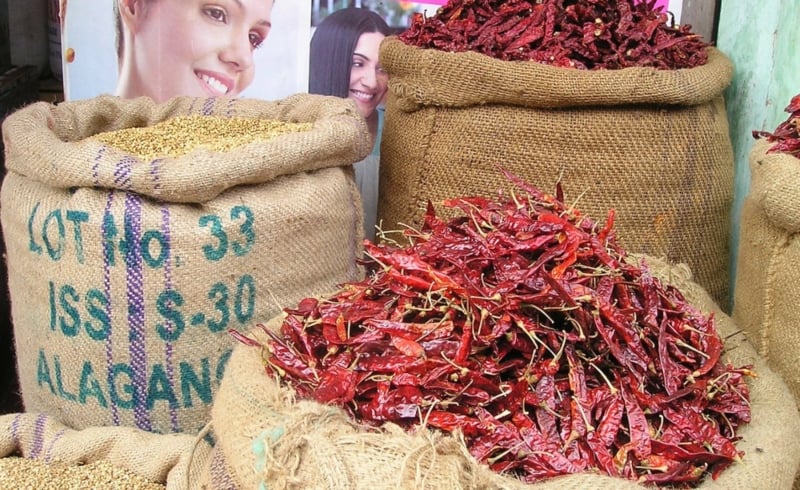
English words that come from Hindi
Language is a living thing, and it changes and evolves. Change or die is the underlying operative! Therefore, it should not be surprising to learn that 200 plus years of British occupation in India resulted in words flowing in both directions. Many Hindi words that have found their way into English are commonplace now such as
- shampoo
- pyjamas
- verandah
- bungalow
- dungarees
- chutney
- bazaar
- bangle
- gingham
- calico
- avatar
- bandana
- jungle
- khaki
- jodhpurs
In 1886 Henry Yule and Arthur C Burnell published the book Hobson-Jobson: The Definitive Glossary of British India. It was described at the time: “A glossary of colloquial Anglo-Indian words and phrases, and of kindred terms etymological, historical, geographical and discursive.” This book has been reprinted many times and is still in circulation today.
In the book, the etymology of the word chilli reveals it came from the country Chile. The spicy, hot peppers were imported into India from Chile, and called chillies. Nowadays, chillies are associated with Indian cooking and an intrinsic part of the culture. A perfect example of how fluid culture is and how adaptable language is. We are all part of the incredibly diverse tapestry of life.
Note: I crowd-sourced many of the examples in this post on social media. Thanks to everyone who contributed.
Photo credit: English in India posters Meena Kadri, Flickr
Photo credit: Image of chillies by Simon from Pixabay
If you enjoyed this post, you can…
Sign up to The Travel Newsletter in the sidebar and follow Breathedreamgo on all social media platforms including Instagram, TripAdvisor, Facebook, Pinterest, and Twitter. Thank you!



